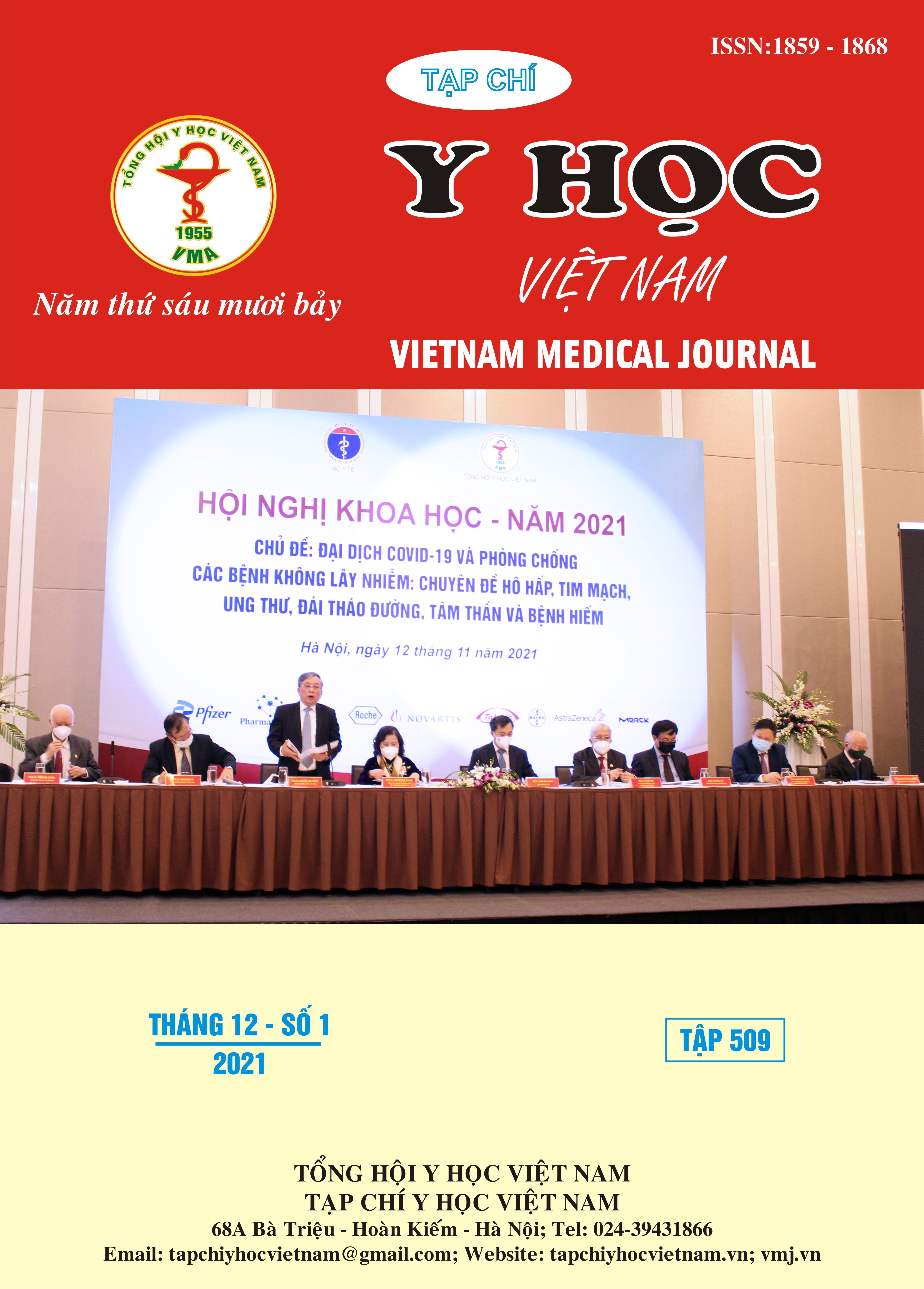STUDYING THE RATE AND TYPE OF EGFR GENE MUTATIONS AND THE EXPRESSION RATE OF P53 AND KI67 MARKERS IN PATIENTS WITH SQUAMOUS CELL CARCINOMA
Main Article Content
Abstract
Studying the rate and type of EGFR gene mutations and the expression rate of P53 and Ki67 markers in patients with squamous cell carcinoma. Objectives: Determine the rate and type of EGFR mutations and the expression of P53 markers and Ki67 in patients with squamous cell carcinoma of the sinonasal.The study subjects included 48 cases of squamous cell carcinoma with histopathological diagnosis, EGFR mutation test results on Colbas 4800 and immunohistochemical staining results of P53 and Ki67 markers on the machineVenatana automatic dyeing. Results: The overall mutation rate of all 4 exons was 56.3%. Point mutation L861Q (exon 21) accounted for the most (25.1%) and mutation exon 20 (T79M) accounted for the least (8.3%). There are 95% of research cases that reveal the P53 marker, in which the moderate and strong expression levels (++ and +++) are the most and equal (39.6%). 100% of the cases revealed Ki67 imprint, in which moderate expression (++) accounted for the most (58.4%), weak expression level was only 10.4%. Non-keratinizing squamous cell carcinoma has a higher rate of EGFR mutation than the keratinized group, but the rate of expression of markers P53 and ki67 is not related to the type of keratinized or non-keratinized cancer. The study results were compared and discussed.
Article Details
Keywords
Nasal squamous cell carcinoma, EGFR mutation, P53 marker, Ki67marker
References
2. Viran J.Ranasinghe, Vanessa C.Stubbs, Danielle C.Reny et al (2020). Predictors of nodal metastasis in sinonasal squamous cell carcinoma: A national cancer database analysis. World Journal of Otorhinolaryngology-Head and Neck Surgery. Volume 6, 137-141.
3. Chittibabu Vatte, Ali M Al Amri, Cyril Cyrus et al (2017). Tyrosine kinase domain mutations of EGFR gene in head and neck squamous cell carcinoma. Onco Targets Ther, 10: 1527–1533.
4. Adel K El Naggar, John KC Chan, Jennifer R Grandis, Takashi Takata et Pieter J Slootweg (2017). WHO Classification of Head and Neck Tumours. Lyon; 11-30.
5. Eiichi Sasaki, aisuke Nishikawa, Nobuhiro Hanai et al (2018). Sinonasal squamous cell carcinoma and EGFR mutations: a molecular footprint of a benign lesion. Histopathology. 73(6):953-962.
6. Aaron M. Udager, Delphine C.M. Rolland, Jonathan B. McHugh, Bryan L. Betz et al (2018). High-Frequency Targetable EGFR Mutations in Sinonasal Squamous Cell Carcinomas Arising from Inverted Sinonasal Papilloma. Cancer Resarch. Volum 75, Issue 13, 68-92.
7. Christos Perisandis (2017). Prevalence of EGFR Tyrosine Kinase Domain Mutations in Head and Neck Squamous Cell Carcinoma: Cohort Study and Systematic Review. In Vivo; 31 (1): 23-34.
8. Fernando López, José Luis Llorente, Carlos Martín Oviedo, Blanca Vivanco et al (2012). Gene amplification and protein overexpression of EGFR and ERBB2 in sinonasal squamous cell carcinom. Cancer. Volume 118, Issue7, 1818-1826.
9. Xiaowei Wang, Wei Lv, Fang Qi, Zhiqiang Gao et al (2017). Clinical effects of p53 overexpression in squamous cell carcinoma of the sinonasal tract: A systematic meta-analysis with PRISMA guidelines. Medicine (Baltimore); 96(12): e6424


